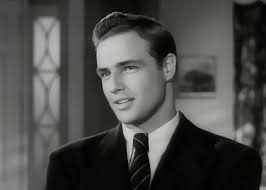 By Professor Satya Narayan Misra in Bhubaneswar, March 30, 2024: It is a paradox that humanity’s yearning for freedom of expression is matched by its urge for its suppression. John Milton thundered in the famous poem Areopagitica: Give me the liberty to know, to utter, and to argue freely according to conscience, above all liberties. In American cinema before the 1960s, Hollywood’s notorious Production Code, dictated that characters in the movies got shot without bleeding, argued without screaming, and had babies without copulation.
By Professor Satya Narayan Misra in Bhubaneswar, March 30, 2024: It is a paradox that humanity’s yearning for freedom of expression is matched by its urge for its suppression. John Milton thundered in the famous poem Areopagitica: Give me the liberty to know, to utter, and to argue freely according to conscience, above all liberties. In American cinema before the 1960s, Hollywood’s notorious Production Code, dictated that characters in the movies got shot without bleeding, argued without screaming, and had babies without copulation.
Censorship wreaked havoc with plot and motivation, which either elided or occluded sexuality as an event in human life. In Europe, particularly Scandinavia, sexual representation had always been less censored. Sexual desires were fully ensconced as a theme in French cinema as in Jean Renoir’s silent film Nana (1926) or Ophuls’s La Ronde 1950). In Italy, neorealism meant that films as diverse as Rossellini’s The Miracle (1948) and Fellini’s La Dolce Vita (1960) would explore sexual themes across a wide range of settings.
The 1960s experienced various renaissance and new waves, a marked relaxation of whatever was frowned upon. Many cinemas moved towards a new level of sexual explicitness, even a new sensationalization. In the USA Roger Vadim’s And God Created Woman (1956) caused a sensation, with Brigitte Bardot’s portrayal of sexually experiencing a lost soul on the French Rivera. An important aspect of this new wave wasthe prevalence of love stories in which what took place in the bedroom was as important as what took place outside.
Truffaut’s Jules et Jim (1961) explored the pitfalls of a triangular affair with the eternal feminine as its apex. Godard’s My Life to Live (1962) cast a clinical eye on the exchange of money and sex. Bergman in Sweden regularly used sexual representation to dramatizethe existence of angst,. as in the orgy description in Persona (1961). In Hollywood, the long history of self-censoring production code had so effectively banished sexual motive from the narrative that when such motive began to appear, this did so with the vehemence of the return of the repressed. The most prescient film is Hitchcock’s Psycho (1960). It’s an important milestone in American film history; the moment when the exploration of giving to a mainstream film began to be constituted as a sexualized thrill, a sort of masochistic roller coaster ride.
 Another measure of vehemence was in the new prevalence of method acting. Stars like Marlon Brando set the stage for a whole generation of male stars, like De Niro and AlPacino, whose masculinity was both complicated and conflicted. It was a different story for the actresses. Increased sex motivation seemed to have a narrowing effect on the expressive range of women on the screen supplanting the intelligence of Bette Davis with the softness of Monroe or the mellowness of Fonda. Sex and violence began to become in the 1960s the very raison d’etre whole new cinema tradition.
Another measure of vehemence was in the new prevalence of method acting. Stars like Marlon Brando set the stage for a whole generation of male stars, like De Niro and AlPacino, whose masculinity was both complicated and conflicted. It was a different story for the actresses. Increased sex motivation seemed to have a narrowing effect on the expressive range of women on the screen supplanting the intelligence of Bette Davis with the softness of Monroe or the mellowness of Fonda. Sex and violence began to become in the 1960s the very raison d’etre whole new cinema tradition.
Mainstream Hollywood unabashedly exploited not only with Pshyco but by directors like Scorsese, and Copolla, bringing their hand to bear on a new visceral, sensational mainstream. Deep Throat (1972) while an indifferent pornographic product was enormously important as the first one to be seen by the mainstream audience. Whether mainstream or marginal, art or exploration, there was a new prevalence of sexualized sensation across the board in world cinema.
Liberalization is an inadequate explanation for the greater sexual freedom of American cinema. A good case in point is what happened following the final demise of the Hollywood Production Code and its replacement in 1968 by the MPAA rating system. This system designed to label works according to the degree of sexual representation, language, or violence had the effect of becoming a crucial marketing tool. The adult category has become the repository of the thriving low-budgethigh-profit realm of pornography.
The rating system, designed as a labelling device, to contain sexual and sensual representation inage-appropriate spheres, became the inadvertent cause of inciting sexual representation with the rating system, as in the American obscenity law. The increased effort to define hard-core sexual representation by Justice Brennan of the US Supreme Court has opened the door to the legalization of hard-core pornography.
If cinema, since the 1960s has become an increasingly obscene area of representation, it is not simply because of liberalization of censors has permitted the emergence of erotic and violent content that was once suppressed. Rather, it is because the very censorship that had kept such contentoff-screen for a mass market audience also had the effect of marketing them as desirable and marketable. Once marketable, the very notion of obscene effectively disappears. Everything comes on screen; the only question is how and for whom.
 The Indian cinema, Satyajit Ray, the master, who firmly ensconced his name in the global firmament with his movie Pather Panchali (1955) was greatly influenced by the neorealism of masters like De Sica’s Bicycle Thief (1948) and Renoir’s The River (1951). But unlike his peers like Bergman, Truffaut, Godard, Fellini, and Hitchcock who had no qualms about showing and experimenting with sex in cinema, Ray was rather discreet about the use ofsexand nudity in his cinema.
The Indian cinema, Satyajit Ray, the master, who firmly ensconced his name in the global firmament with his movie Pather Panchali (1955) was greatly influenced by the neorealism of masters like De Sica’s Bicycle Thief (1948) and Renoir’s The River (1951). But unlike his peers like Bergman, Truffaut, Godard, Fellini, and Hitchcock who had no qualms about showing and experimenting with sex in cinema, Ray was rather discreet about the use ofsexand nudity in his cinema.
For instance, in his eponymous film Pather Panchali, a film capturing the rural Bengal landscape in 1910 when women never used petticoats and blouses, he shows Sarbajaya, the mother as fully clothed. It was both a vindication of his Victorian morality and respect for women. Even his Indian peers of the 60s like Mrinal Sen, though hugely impacted by Godard, did notgive in to the temptation of displaying sex in his films like Bhuban Shome. Both in terms of language, sex, and sensation, Ray& Mrinal showed remarkable rectitude.
The CBFC in India as the regulatory agency for cinema assigns each film one of the four categories U, A, UA, and S. The film Bandit Queen (1994) which got an A rating showingthe frontal nudity of Phoolan Devi caused a huge outcry. When challenged in the court, itupheld thescene. The Court observed that nakedness does not always arouse the baser instinct. The court referred to the film Schindler’s List (1993) where naked men and women were being led to the gas chambers of a Nazi camp. Tears are a reaction, except in the case of a pervert, the court observed. Sekhar Kapur’s film made on a budget of $32 million grossed $221 million. Under the growing influence of Hollywood, liberalization in the air, the power of the market had the last laugh. Nudity and the rating system of cinema have become unconscious allies of the free market.


Leave a Reply
Be the First to Comment!